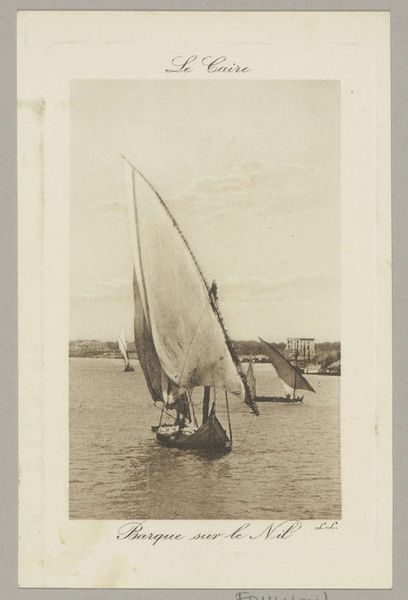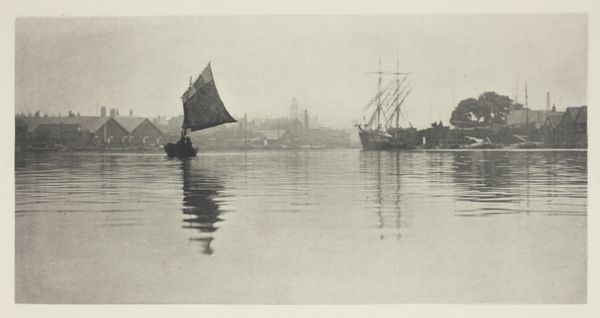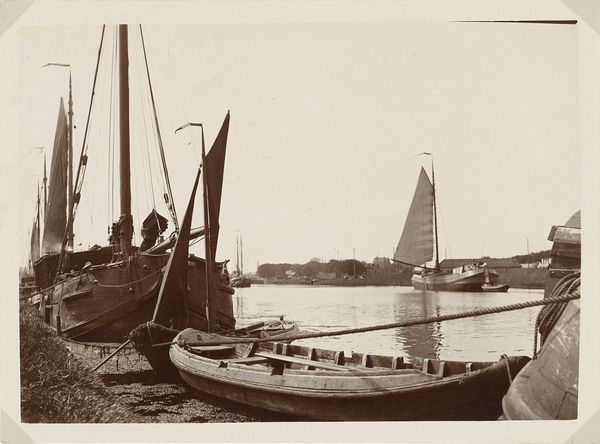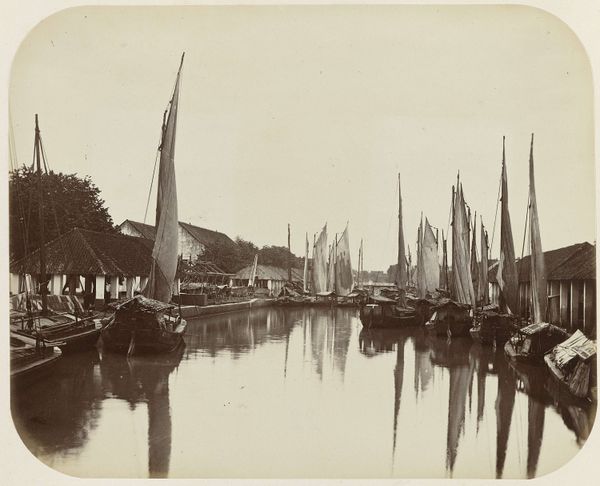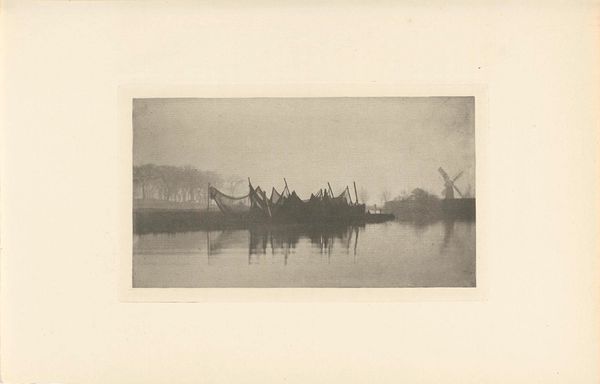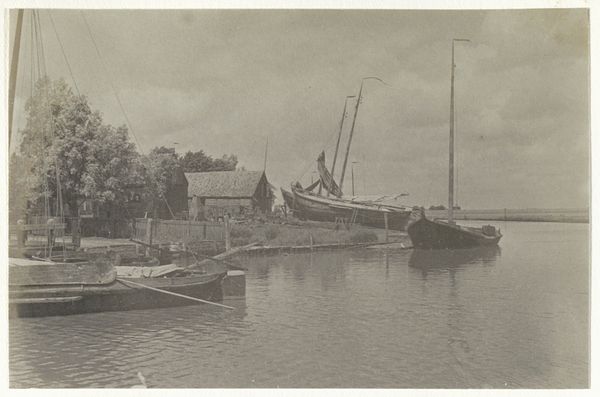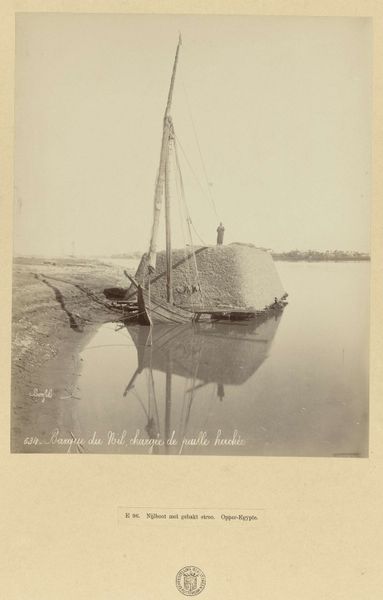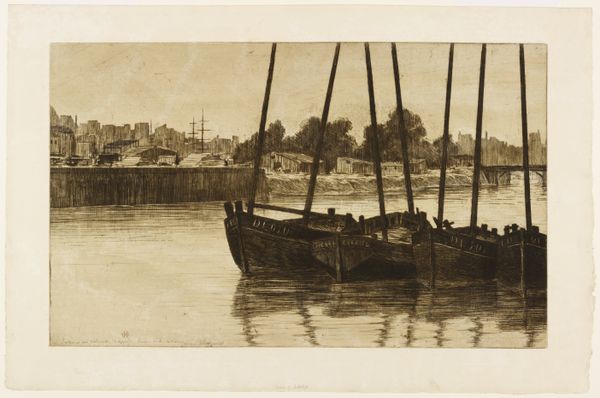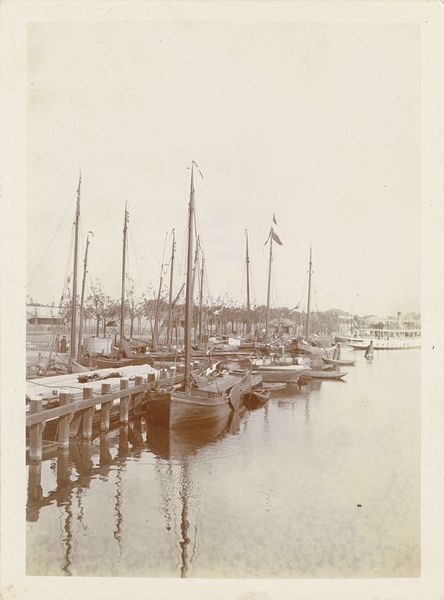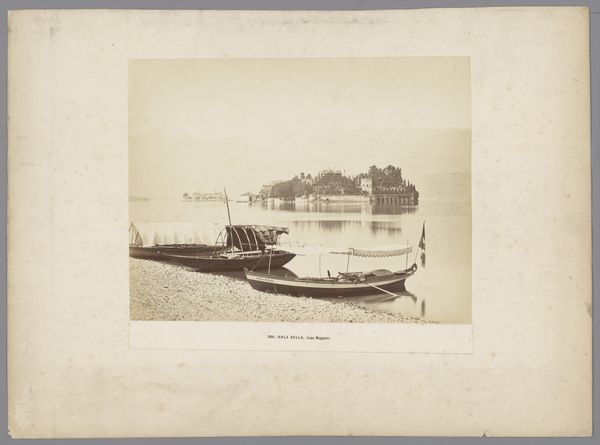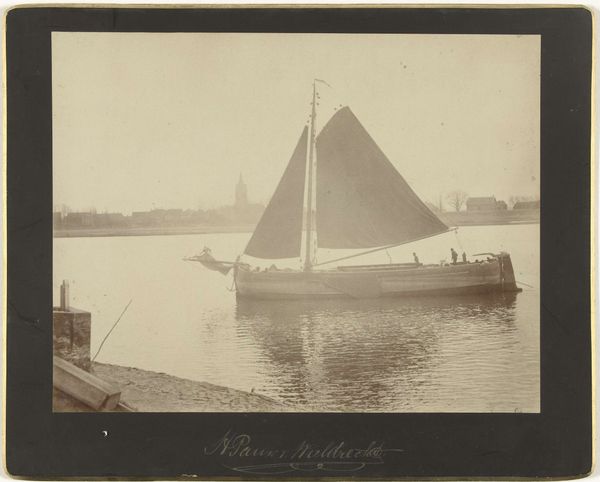
print, photography, watercolor, gelatin-silver-print
#
16_19th-century
#
pictorialism
# print
#
impressionism
#
landscape
#
photography
#
watercolor
#
gelatin-silver-print
#
realism
Dimensions: 22.1 × 16.8 cm (image/paper); 40.7 × 28.5 cm (album page)
Copyright: Public Domain
Curator: This is Peter Henry Emerson's "The Village of Horning," taken in 1886. Notice how Emerson uses the gelatin silver print process to capture the stillness of the water and the sails against the village backdrop. What's your immediate reaction to this image? Editor: The monochromatic palette definitely evokes a sense of nostalgia. The reflection of the sail creates an almost symmetrical composition, divided vertically, and it highlights the interplay between water and light, suggesting a feeling of serene melancholy. Curator: Absolutely. Emerson was deeply interested in naturalism and representing rural life authentically. Look at the texture in the reeds and the detail in the architecture; each element serves as a signifier to decode rural society through photography, elevating photography into art through intentional artistic choice. Editor: Interesting. For me, though, the interest lies in the actual materiality of this image. The gelatin silver print process, though more refined than earlier photographic methods, was still a laborious practice involving mixing chemicals, coating plates, and meticulous darkroom work. The fact that he used this emerging technology to portray an everyday scene emphasizes the social stratification of access to the medium. Also, consider that photography was changing the ways traditional rural labor was viewed and distributed, with people becoming objects themselves. Curator: Yes, the chemical process itself allowed Emerson to refine the tonal gradations and capture light with subtlety. However, I think the emphasis on technique served more to realize his aesthetic vision to convey what he termed ‘truthful’ representations of landscape. We could read that even through structuralism as the relation between subject, form and reality. Editor: But what do you consider ‘truthful’ when that truth is produced and presented using materials that were not equally accessible? The production of these gelatin silver prints and their widespread distribution created new social strata by generating demand in raw materials. Curator: Granted, that adds another layer of interpretation, revealing power dynamics inherent to artistic production. But let us appreciate how the soft focus and muted tones draw us into a contemplative mood, emphasizing formal unity through repetition, lines, and subtle gradations. Editor: Understood. The act of material extraction and commodification should be further unpacked for a deeper reading of its impact, revealing the relationship of technology and rural society. Curator: A potent thought indeed, providing a new perspective when reflecting upon it today. Editor: Indeed, this reveals something far richer beneath the photograph's deceptively serene surface.
Comments
No comments
Be the first to comment and join the conversation on the ultimate creative platform.
